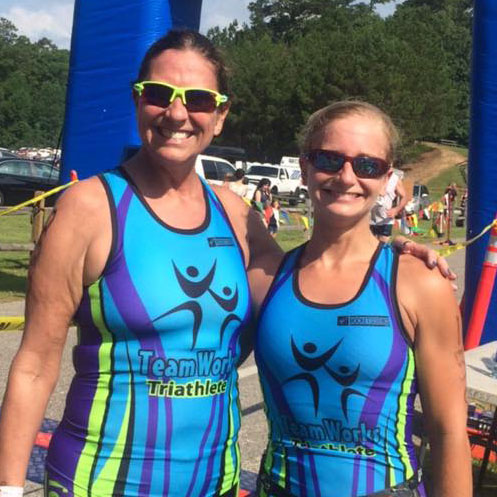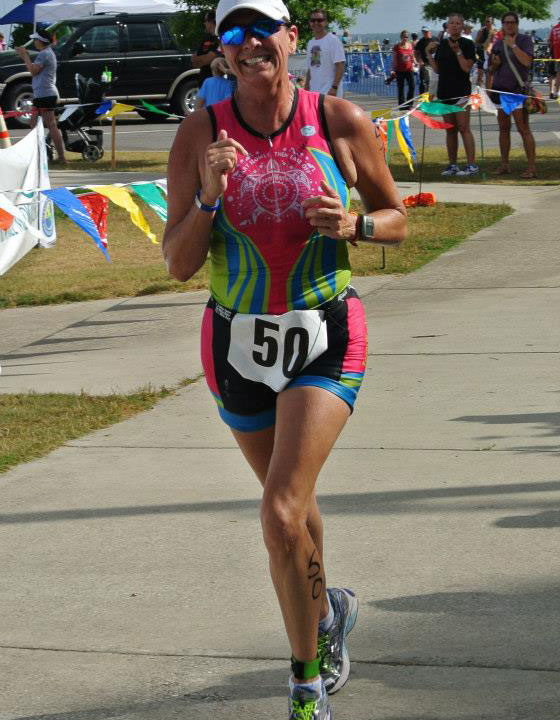Help! I want to do a triathlon where do I start?

The 4 C’s of Triathlon
May 30, 2018
First Timers Guide
May 31, 2018Ok, here are a few steps to take when considering your first triathlon…What distance would you like to tackle? Here are your basic choices, (sprint distances vary but after that Olympic thru Ironman are standardized distances): Sprint– 1/3 mi SWIM; 15 mi. BIKE; 5K RUN (supersprints are even shorter). Olympic– 1.5K SWIM; 40K BIKE; 10K RUN. Half Triathlon (also known as Half Ironman or 70.3)- 1.2 mi. SWIM; 56 mi. BIKE; 13.1 mi. RUN. Full Triathlon (also known as Ironman or 140.6)- 2.4 mi. SWIM; 112 mi. BIKE; 26.2 mi. RUN. Rather than commiting to an ALL DAY event like the Ironman your first time out, I would recommend starting with a sprint triathlon. The usual swim distance is roughly 500-600 yards (which = 20-24 lengths of your standard 25 yard pool), very doable if you practice your relaxed swimming technique in the pool. The bike portion can be anywhere from 12 to 18 miles and you can choose any type of bicycle you would like to ride. The run is typically 3.1 miles to finish it off. Take each yard/mile one step at a time and before you know it, you’ve just completed your first triathlon. And by the way, if you’re not the best swimmer around, take some time to learn the proper stroke mechanics and always stay relaxed. **Remember SLOW is SMOOTH and SMOOTH is FAST!
1. Choose a Local Race that will not require too much travel as that requires additional time, planning, organization,and perhaps undue stress that may detract from your race. Stay local and you’ll only have to focus on the race itself– Setup, Warmup, Swim start, Swimming with sighting, Swim exit, T1, T1 Exit, Bike, T2, T2 Exit, Run and Finishing with a smile!
2. Do I Have to Spend a Bunch of Money on Equipment? If your goal is to comfortably complete your event in good health, all you need is: *Swimsuit and goggles; *Bike that fits you- this can be mountain, hybrid, touring or road bike. (Many triathletes complete their first tri on a borrowed bike and that works too.); *Bike Helmet is required for the race and is smart to wear during all cycling training; *Cycling shorts (be sure you wear your padded cycling shorts without underwear- wearing underwear can create saddle sores.); *Good pair of running shoes, used only for running. Don’t ask your running shoes to do double or triple duty doing yard work and errands.
3. How Long Should I Train and What Resources Should I Use? If you decide to train for a sprint event and you are beginnig your training with limited fitness, you can be ready to go at the end of 12 weeks with weekly training hours ranging from 3 to 6 (up to 8), provided you are using a structured plan. This is a doable time commitment don’t you agree?
Training Resources: If you prefer to train with a group it’s usually not hard to find a local Triathlon Club or Organization. Some are more ‘beginner friendly’ than others. The group may even be associated with a triathlon coach, which is always a plus. You may also check out your local city or recreation center, sometimes they offer training groups or instruction in swimming, biking, running and/or triathlon. If you are not interested in structured group training or coaching, there are many books and online training programs available. Following a guide designed by a professional coach helps you be confident you are prepared for race day without rist of injury, undertraining or overtraining. There are a few beginner books out there, but a couple I would recommend are: Your First Tri by Joe Friel and Triathlon Training Basics by Gale Bernhardt. Both of these books come complete with reference to every aspect of your triathlon training and racing, including your basic weekly training plan for both Sprint and Olympic distances. Training Peaks (online training tool) also provides standardized training plans for all levels of athletes, even from local coaches.
4. You Can Do It! Now you know all the basics, I’m fully confident you can be ready for a triathlon in as little as 3 months. What’s holding you back from getting started NOW?


